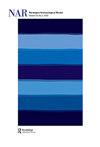重新思考历史时间,现代主义的新途径
IF 1.1
3区 历史学
0 ARCHAEOLOGY
引用次数: 9
摘要
马雷克·塔姆(Marek Tamm)和劳伦特·奥利维尔(Laurent Olivier)汇集了一本真正鼓舞人心的著作,对于像我这样的历史外行来说,它提供了很多思考的食物。首先,有必要指出,历史,也许更重要的是历史研究,在这本书中被理解为极其多元的。这给这本书增添了一种跨学科的基调,最明显的是这本书对考古学家的欢迎。更重要的是,我以考古学哲学家的身份阅读了这本书,我被反复提醒考古学、历史学和哲学的不同组合对历史理解的重要性。正如我们被告知的那样,今天的历史所关心的不是时间的概念化,而是如何将时间和历史看作是由多重时间性组成的。不仅有许多过去、现在和未来,而且还有许多研究它们的方法。这种简单的认识形成了这本书的背景和目的:“与当代时间概念进行跨学科的对话”(编辑介绍,第3页)。然而,这种表述有些误导,因为这本书提出了一个特定的当代问题,我敢说,是以欧洲为中心的时间概念:现在主义。在克里斯·洛伦兹(Chris Lorenz)对这个词的创始人之一弗朗索瓦·哈托格(francois Hartog)的解读中,“现在主义”可以意味着两件事。它要么是1)我们现在的一个术语,当代时期,时间上的一个片段,要么是2)在分析过去、现在和未来之间的关系时,一个特殊的启发式工具,而现在仍然占主导地位。前一种观点只是重申了现代历史概念的因果性、方向性和单线性,并将其作为问题的一部分而不是解决方案,而第二种观点更有趣,而且在我看来,它也是本书许多章节(如果不是全部章节)背后的动机。现在主义的问题(我说问题是因为,正如Aleida Assmann在她的书的结论中所指出的那样,对现在主义的反历史主义的明显愤怒贯穿了全书的各个章节)在三个运动中运作。第一部分深深植根于历史哲学,并以此为基础描绘了当下主义的一些哲学基础。一方面,现代主义的根源可以追溯到两次世界大战、大屠杀和后殖民主义之间的时期。这些事件形成了对未来不信任的动力,这种不信任与对我们不能抛弃的历史的失望交织在一起,导致了现在主义(第4章,第73页)。虽然存在主义的原因可以通过对后现代主义的分析来理解,但同样明显的是,作为一个分析概念,存在主义的根源可以延伸到启蒙运动。这里特别提到了康德。如果在圣经年代学中,历史适应了年代学,那么在康德的分析中,启蒙运动之后,年代学不得不适应历史。赫尔格·乔德海姆(Helge Jordheim,第2章)哀叹道,这打破了时间顺序。在后人类主义和人类世思想的背景下,年代学的概念尤为重要,这两个主题都是现代主义的核心。虽然人类世的末世思想是建立在由一连串创伤性事件构成的历史观点之上的,因此是后现代灾难论的延续,但很难将其标记为现在主义,因为它想象的未来与过去和现在完全不同(第4章,第79页)。从这个意义上说,虽然将历史视为过程的延续(尽管是对黑格尔如何将其设想为进步的否定),但在后人类主义的人类世思想中,未来占主导地位。另一方面,在人类世的地球化学家和气候学家阵营中,过去占主导地位。为了…本文章由计算机程序翻译,如有差异,请以英文原文为准。
Rethinking Historical Time, New Approaches to Presentism
Marek Tamm and Laurent Olivier have put together a truly inspiring collection of writings that, for a history dilettante like me, provided a lot of food for thought. Firstly, it is necessary to note that history, and perhaps more importantly historical research, is understood in the book as extremely multivalent. This lends the collection a transdisciplinary tone that is most evident in how welcoming the book was to an archaeologist. More importantly, I read the book as a philosopher of archaeology who was repeatedly reminded of the importance of the different combinations of archaeology, history, and philosophy to historical understanding. History today, as we are told, is not interested in any defining conceptualization of time, but in how to think time and history as consisting of multiple temporalities. Not only are there many pasts, presents, and futures, but also many ways to research them. This simple realization forms the backdrop and aim of the book: ‘to enter into a transdisciplinary dialogue with the contemporary conceptualisations of time’ (editors’ introduction, p. 3). This formulation is, however, somewhat misleading because the book takes issue with one particular contemporary and, dare I say, Eurocentric conceptualization of time: presentism. Presentism, in Chris Lorenz’s (Ch. 1) reading of François Hartog, one of the originators of the term, can mean two things. It is either 1) a term for our present, contemporary period, a block in time, or 2) a particular heuristic tool in the analysis of the relationship between the past, present, and future where the present nevertheless dominates. Whereas the former view is simply a reaffirmation of the modern conceptualization of history as causal, directional, and unilinear, and as such part of the problem rather than the solution, the second meaning is much more interesting and, as I see it, also the motivation behind many, if not all, of the chapters. The problem of presentism (and I say problem because, as also noted by Aleida Assmann in her conclusion to the book, there is an evident irritation with the anti-historicism of presentism running through the chapters) is operationalized in three movements. Part 1 is deeply rooted in the philosophy of history and as such charts some of the philosophical foundations of presentism. On the one hand, the roots of presentism stretch back to the time between the world wars, the Holocaust, and post-colonialism. These events form the impetus to the distrust in the future which, entwined with the disappointment with a history that we cannot leave behind, leads to presentism (Ch. 4, p. 73). While the causes for presentism can be understood via an analysis of postmodernism, it is also evident that the roots of presentism as an analytical concept extend to the Enlightenment. Special reference is made to Kant. If in biblical chronologies history was adapted to chronology, in Kant’s analysis, after the Enlightenment, chronology has had to adapt to history. This, Helge Jordheim (Ch. 2) laments, created a break with chronology. The concept of chronology is particularly important in the context of posthumanism and Anthropocene thinking, both topics central to presentism. While the end-time strand of Anthropocene thinking is predicated on the view of history consisting of little more than a succession of traumatic events, and therefore is a continuation of postmodern catastrophism, it is hard to label it as presentist because it imagines a future that is radically different from the past and the present (Ch. 4, p. 79). In this sense, while treating history as a processual continuation (albeit as a negation of how Hegel envisaged it as progress), in posthumanist Anthropocene thinking the future dominates. In the geochemist and climatologist camp of the Anthropocene on the other hand the past dominates. In order to
求助全文
通过发布文献求助,成功后即可免费获取论文全文。
去求助
来源期刊

Norwegian Archaeological Review
ARCHAEOLOGY-
CiteScore
2.10
自引率
0.00%
发文量
13
期刊介绍:
Norwegian Archaeological Review published since 1968, aims to be an interface between archaeological research in the Nordic countries and global archaeological trends, a meeting ground for current discussion of theoretical and methodical problems on an international scientific level. The main focus is on the European area, but discussions based upon results from other parts of the world are also welcomed. The comments of specialists, along with the author"s reply, are given as an addendum to selected articles. The Journal is also receptive to uninvited opinions and comments on a wider scope of archaeological themes, e.g. articles in Norwegian Archaeological Review or other journals, monographies, conferences.
 求助内容:
求助内容: 应助结果提醒方式:
应助结果提醒方式:


